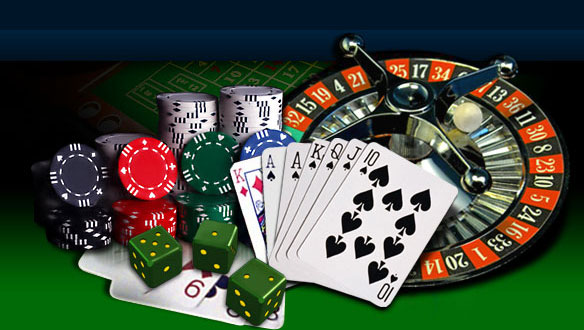Poker has always been a mix of skill, math, and psychology. With the rise of modern software and gadgets, the way players prepare and play has changed. Real-time helpers give more data, faster analysis, and new ways to study away from the table. The right poker tools can turn guesswork into informed choices.

HUDs and Trackers
Heads-Up Displays, or HUDs, are the most recognized helpers in online poker. They pull stats from hand histories and show them directly on the table. Numbers like VPIP (Voluntarily Put Money in Pot) or PFR (Preflop Raise) reveal how loose or aggressive an opponent is. A quick look shows who bluffs often and who bets only strong hands.
Software such as PokerTracker 4, Hold’em Manager 3, and Hand2Note remain industry standards. They combine HUD overlays with large databases of hands, helping players find leaks after sessions. For example, reports may show that defending blinds too often costs hundreds of big blinds across thousands of hands.
Alongside technical software, many players also look at promotions and side perks from poker rooms. One common option is the daily login bonus casino, which rewards consistency. While not a strategy tool, it stretches a bankroll and gives more room for practice.
Quick HUD checklist:
- VPIP — shows how loose an opponent plays.
- PFR — tracks preflop aggression.
- Gap between VPIP and PFR — signals passivity.
- 3-bet% — frequency of reraises.
- Fold to 3-bet% — key when deciding to attack.
- Continuation bet stats by street.
- Aggression frequency postflop.
- Sample size — small samples can mislead.
HUD numbers work best in context, not as isolated signals.
Equity and Odds Calculators
Equity calculators show the chance of winning against ranges or specific hands. Odds calculators display pot odds, implied odds, and required equity. These tools build mathematical intuition for pressure spots.
Three equity drills for study:
- Assign a realistic range to your opponent.
- Calculate the equity needed to call using pot odds.
- Run the hand through Flopzilla or PokerStove to compare with your estimate.
- Note one takeaway for future spots.
Short drills turn theory into useful habits.
Flopzilla and PokerStove let players test ranges, add board textures, and see how equity shifts. For instance, pocket eights may hold 65% equity preflop against two overcards, but drop sharply on an ace-high flop. Such shifts build intuition for real games.
Most sites ban calculators during live play but encourage their use for study. Simplified versions sometimes appear in built-in platforms for new players.
GTO Solvers and Trainers
Game Theory Optimal play, or GTO, became accessible through solvers. Programs like GTO Wizard or PokerSnowie show balanced strategies for common spots. They suggest betting frequencies and allow comparisons between personal choices and optimal play.
The detail is their strength. For example, against a three-bet from the blinds, a solver may recommend mixing four-bets and calls with suited aces at precise rates. No one memorizes every line, but repeated study builds patterns and reduces leaks.
Modern solvers run on cloud servers, so heavy calculations no longer require powerful PCs. Many platforms include quizzes and hand replays. The learning curve is steep, but the payoff is sharper play.
AI-Powered Poker Tools
Artificial intelligence entered poker when systems like Libratus and Pluribus managed to beat top professionals years ago. Today, simplified AI-driven tools filter into training platforms. PokerGPT, for example, uses language models to simulate advice in multi-way situations.
AI tools analyze massive databases in seconds. They highlight questionable plays, suggest counter-strategies, and mark opponent tendencies. For players who grind thousands of hands each month, such insight prevents costly habits from going unnoticed.
READ MORE: How AI Poker Solvers Are Changing the Game
AI helper uses overview:
| Task | What AI highlights | When to use | Live-play status |
| Hand review | Marks mistakes and alternatives | Post-session | Allowed |
| Population reads | Finds common pool tendencies | Study databases | Allowed |
| Exploit detection | Spots overbluff or overfold leaks | Post-session | Allowed |
| Line suggestions | Suggests alternative strategies | Training only | Banned live |
These assistants shine in review sessions, refining strategy without crossing into prohibited live aids.
Gadgets and Mobile Apps
Poker is no longer tied to desktops. Mobile apps and gadgets support study, tournament prep, and live notes. Some focus on bankroll management, others on tournament math like ICM. Casual players can set up lightweight tools that make practice easier.
Useful categories include:
- ICM calculators for late-stage tournament push/fold spots
- Bankroll trackers that record buy-ins, profit, and variance
- Hand loggers and note apps for recording live reads
These apps simplify organization and support discipline. They cannot replace solvers or full trackers, but they offer portable help for steady improvement.
Putting It All Together
Real-time helpers cover many areas: HUD stats, equity calculations, solver drills, AI reviews, and mobile apps. Each plays a role in building a structured, data-driven approach. They do not promise wins, but they raise the ceiling for players willing to learn. Used together, they shift poker closer to skill than guesswork.




